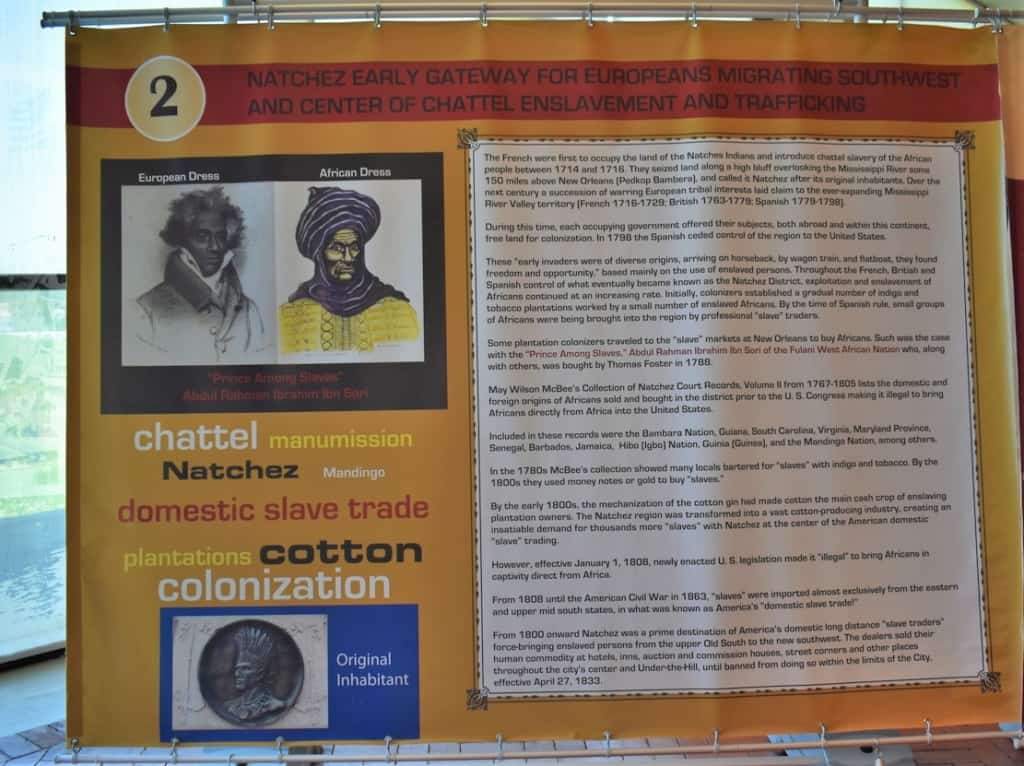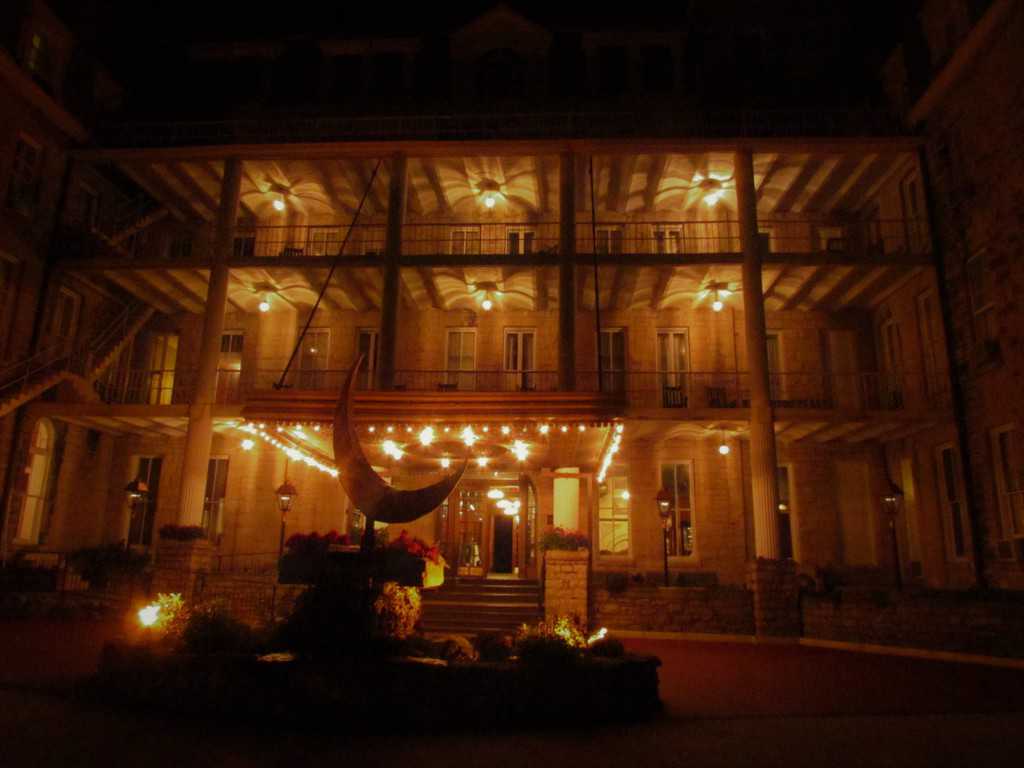One of our favorite things about travel blogging is learning about new destinations. Our first visit to the state of Mississippi landed us in the oldest city. Natchez has sat high above the bluffs of the river since 1716. Of course, native people were already inhabiting the region long before the French settlers arrived. The mild climate and rich soil beckoned new arrivals from immigrants all over the globe. The mix of cultures is apparent in the architecture of the homes and buildings that make up Natchez. Our first stop would be the Natchez Visitors Center, to gain a better understanding of this Mississippi city.

Earliest Inhabitants
In just about every corner of the North American continent, there is evidence of native peoples. The Natchez people resided along the bluffs of the Mississippi River, near where the city lies today. Their language was unique to them and unlike most any other tribe. While it is impossible to say for sure, it is quite possible that the earliest European contact was made by Hernando de Soto in 1542. In his notes, he spoke of a powerful chiefdom located on the eastern banks of the river. The encounter was short-lived, as the natives attacked and chased the Spanish explorers out of their territory. When French explorers arrived around 1700, they were met with less hostility. It would only take three decades for this relationship to sour. After a series of conflicts between the two parties, the French would attempt to take the lands of the tribe and war would see the defeat of the Natchez people and the end of the Grand Village of the Natchez.

The Early Days of Natchez
By the mid-1700s, the rule of the land had changed hands. With a French defeat at the Seven Years’ War, Great Britain assumed control over this region. Much of the land was parceled out to officers from the war. The Revolutionary War saw an end to British rule, and in 1779 Spain took control of the land. By the end of the 1700s, Americans had acquired the lands from the Spanish and set up Natchez as the capital of the Mississippi Territory. Prior to the invention of steamboats, Natchez served as the port for cargo heading north along the Natchez Trace. With the territory opening up, plantations began popping up, which included the use of slave labor.

Dark Days
As America moved into the 1800s, there was a rapid increase in the number of enslaved people being moved through the southern regions. The transatlantic slave trade had become an influential business across the southern territories. Markets were set up that dealt strictly with the sale of slaves. While markets were found in Jackson, Vicksburg, Aberdeen, and other Mississippi cities, it was Natchez that was the most active. The growing textile market in England fueled the need for more cotton to be produced in the United States. The invention of the cotton gin, as well as advances in shipping, led to an expansion of plantations.

Forks of the Road
In 1807, a federal law was passed that prohibited the import of additional slave labor from Africa. By this time, there was already a massive number of enslaved people on American soil. A large number had been brought to the Chesapeake Bay area for use in the tobacco fields. With the productivity of this crop waning, it opened up an internal source for slaves to the south. To help facilitate the movement of the enslaved people, slave markets were set up across the region. On the eastern edge of Natchez, one of the busiest markets would arise. Known as “The Forks of the Road”, it would see steady use until Union troops occupied Natchez in the summer of 1863. Before its end, tens of thousands of slaves would pass through this market.

Turbulent Times
Even though the Natchez Visitors Center has limited space, they have made the most of it for educational purposes. During the time of the Civil War, this river city was a key producer of cotton. This crop was vital to help fund the Confederate Army. When New Orleans fell to Union forces in the spring of 1862, it signaled the loss of the Mississippi River to the Confederacy. Due to the surrender of the city, Natchez would avoid much of the destruction that was doled out to other southern cities. It would even become a refuge for many former slaves who were freed by the Emancipation Proclamation.

Changing the City’s Path
After the war, Natchez would rebound quicker than most southern regions. Cotton remained a popular crop, but slave labor was replaced by sharecropping. The access of river traffic once again placed the city in a vital position. It allowed the transport of manufactured goods from the north. Steamboats plied the waters, offering luxury travel options. This would continue to be the case until the railroads replaced river traffic. Natchez would find itself under scrutiny during the Civil Rights movement. An active presence of the Ku Klux Klan created a volatile environment that would require federal intervention. It would take many more years to squash the after effects of slavery in the southern United States.

Natchez Visitors Center
You can see we found loads of history during our visit to the Natchez Visitors Center. The city has survived its turbulent past to become a jewel of the Mississippi River. Armed with all of this newfound information, we were prepared to head out exploring. Who knows what amazing discoveries await us around the next corner? One thing is for sure, we will be keeping our eyes open for more chances to learn about the early days of Mississippi’s first city. Isn’t it time for you to plan a visit?





